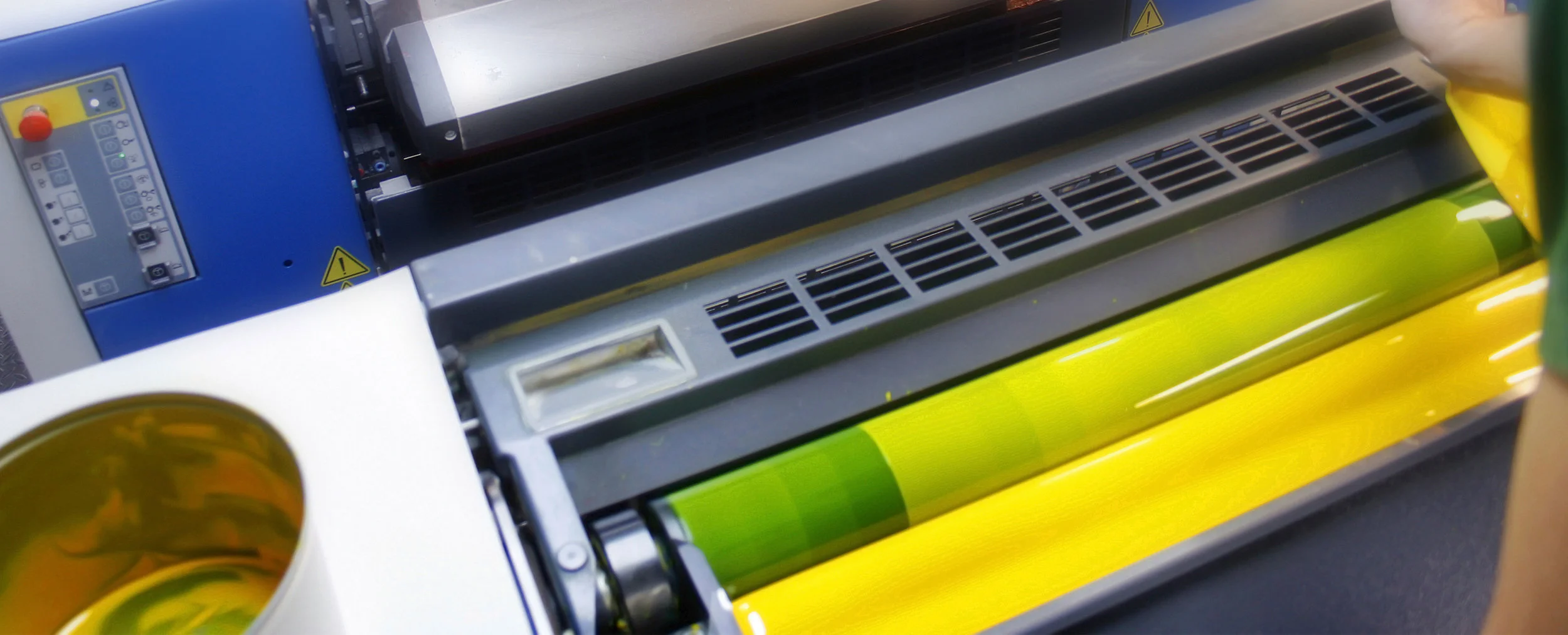I wrote a book called Clients are Aliens and Designers are Monsters. It got rejected by my publishers (BIS Publishers) because it might be perceived as a bit too negative. In my view, it wasn't. It was a semi-satirical view of the relationship between designers and their clients, with a view to pointing out what could be done to make both parties’ life a bit easier.
Viewing entries tagged
graphic design
So, what goes on at a London graphic design agency?
What does a graphic designer do?
How do designers balance their design and development work with endless communication with clients?
Do account managers liaise between the clients and designers, but where does the quality control come into play?
Thanks to the COVID-19 pandemic, we have all been forced to work from home. And with no clear indication on when we will be allowed back to the office in the UK, we have to get used to it.
There are a whole host of techniques that you can use to make you print publications look and feel different. All come at a cost of course, but it is money well spent when you see the final result. These finishing (the processes that occur after the printing has been done) techniques can be applied to most things, from the humble business card, brochures and annual reports and are especially useful and relevant when implying luxury, quality or simply to stand out from the crowd. A word of caution, use with moderation.
With a publishing deal under my belt and a book launched in Europe, and let’s face it the UK being the primary market, Know Your Onions: Graphic Design (as of March 2019) has been re-printed 14 times to the tune of 56,000 copies. It has been translated into Chinese, simplified Chinese for Thailand and Japanese. I am, of course, delighted by this, but find it odd that France, Germany, Italy and cultural countries that are more aligned with the UK have not been so successful.
I am very lucky to have a close relationship with my readership, through Twitter and email. This manifests itself in a number of ways. Sure I get tweets, but I also get direct questions and requests from my readership who want some specific advice. I do my best to accommodate them and help where I can. In one instance I advised a reader to sort his portfolio out. He did. Eighteen months later he arrived at my door and presented his portfolio. I gave him a job. That all worked out very well – for both of us.
I’ve employed a fair few graphic designers in my time. Most of which are straight out of uni or as a result of work experience. Setting aside the advise I give in What to Put in Your Portfolio and Get a Job: Graphic Design – these are the top ten things you need to think about, and do, when you get your first job.
This then is the second and last in our series of ‘Design miscellany’ series, from M–Z. Nothing more than random comments, explanations and observations to inform and hopefully entertain.
Working with luxury brands and services requires a shift in communication mind set. You are no longer required to speak to the masses, but to the few. Often your market is more demanding and harder to impress. You must understand what is important to them and your aim is to communicate the product or services in a light that makes it a 'must have'
This is the first of two emails in our ‘Design miscellany’ series. This is a collection of terms, comments and miscellany in alphabetical order with no other rhyme or reason other than to inform and entertain.
There is often the misconception that once a piece of print work has been signed off, the final printed matter should be available in a matter of hours, let alone days. Like most things in life, there is more to print production than meets the eye. True, some modern print production techniques deliver astonishing results in a matter of hours. This article firstly talks you through the typical process of litho printing and then explains the other options, their benefits and disadvantages.
We (Navig8) are lucky enough to get a constant stream of CVs flooding into our inboxes of the finest creative talent this country (and abroad) has to offer.
The problem is that the vast majority of approaches are of a poor standard, something that could be easily fixed with a bit of effort.
This is a hit list for any would be employee. This covers the bare minimum if you hope to have any chance of getting your foot in the door. Remember, unless you are responding to an advert, the agency may not be actively looking for a new recruit. Having said that, we are always on the look out for talent.
We think a lot; we get paid to think. So it’s hard not to come up with ideas because we’re always thinking. Coming up with good ideas isn’t quite so easy. There is, unfortunately, no magic formula. But there are ways to increase the likelihood of striking that eureka moment and coming up with a great idea. This month we have a guest writer – Cris (no H) Convery, an ideas monster here at Navig8.
British design is considered the finest in the world, from cars to Hoovers. Often nostalgic, our design icons define us. There are so many global design icons that originated in the UK. Here we focus on the motor industry.
Happy New Year, unless you are Chinese of course, in which case I'm a tad early. This newsletter is a tongue-in-cheek look at typical client requests made to designers and why a client might want to think again. :-)
Infographics are a brilliant way to quickly communicate a journey, a process, a service, all sorts of things. They are far more visually engaging than a paragraph of text and done right, can deliver complex messages quickly and with style. We do a lot of them and there are certain things that help make them work hard for you.
Graphic designers are always banging on about typography, but what are they going on about and does it really matter? In this installment we tackle the issues, discover the disasters and detail the do's and don'ts*.
To be 100% clear from the outset, this is the Top 10 Graphic Design book for graduates and graphic designers starting out in the industry - but with an additional three books (shameless plug) written by our Director. We've all gotta eat, right? I've avoided design books that just show pages and pages of other people's work as much as possible. It turns out that a lot of these recommendations doff their caps to the past. That's not to say modern designers haven't produced great work and great books.
We all love infographics don't we? They are a brilliant way of communicating complex data, journeys, services etc. But like most things in design, they are not easy to get right. Things like too much content, not enough levels of data and the use of poor iconography will mean your infographic will not work hard for you, or at least not as hard as it should.
In this article I set out some of the things a client and designer should consider when creating an infographic.
Free pitching is a hot issue. Why do clients ask agencies to work for free? On many occasions, an agency will be asked to 'do the job whole' to be considered for the work. Madness.
The creative industry is the only industry, as far as I know, that gets asked to deliver work that has value, before being paid. Is this fair? Or as clients say, 'well that is just how it is'.





















